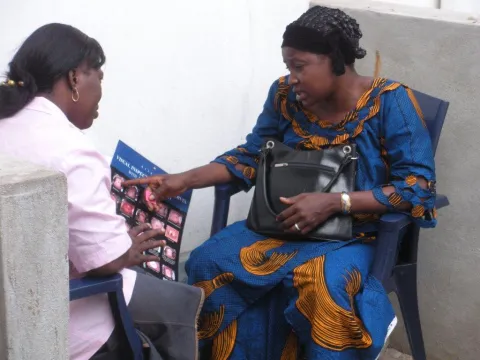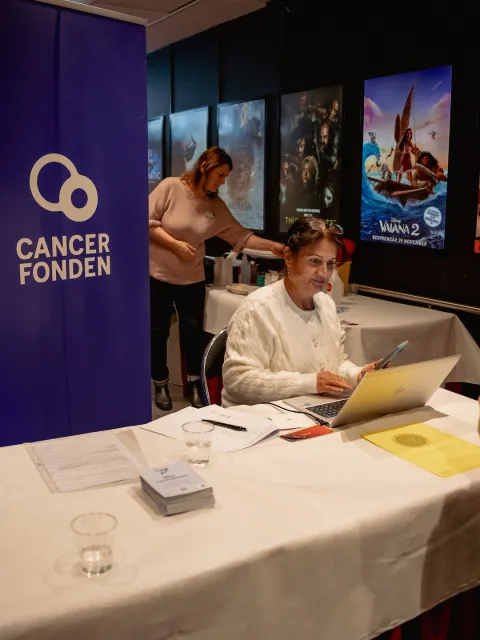Friends Don’t Let Friends Get Cervical Cancer

They lived in the same rural Kenyan village where I grew up. No one there ever talked about the disease that killed 311,365 women globally last year, the majority of whom live in communities across Africa and Asia.
No one knew it was caused by a common virus that is preventable, or that when detected early, it’s easily treatable. Women who went to the clinic—or even to a hospital—never were asked when they last had a Pap test or any kind of screening.
When they suffered symptoms, they wrongly blamed less stigmatised conditions like diabetes and high blood pressure, or some bad omen. What middle-aged woman would dare to admit she had started bleeding if she feared that her husband might be disgusted and leave her; if her neighbours might suspect her to be a witch?
After my friend’s mother died, I helped organise a group of my mother’s friends at our house. My aim was to mobilise local women around a disease that might be affecting them, even if they were feeling just fine. My mother’s best friend Sabina was one of 15 women in that informal club to be diagnosed with cervical cancer. It was at an early stage and she was treated and now is cancer-free. But make no mistake, her story is unusual given the context of a growing global burden of cervical cancer. We can reverse this trend, however, and reassure Sabina’s granddaughter, one of 1.8 billion young people in the world today, that it’s possible to escape the disease altogether.
This is how: New prevention, screening and treatment tools—namely a vaccine, artificial intelligence (AI), self-testing and a battery-powered treatment device. Those, alongside the push by the World Health Organization to eliminate cervical cancer, should mean better health for girls and women everywhere, even in Kenya’s most remote villages.
The Global Call to Action for Cervical Cancer Elimination , launched in May 2018 at the World Health Assembly, calls on countries to ensure that all girls and women—no matter where they live—have access to the vaccine, screening and treatment to stop needless deaths.
Cervical cancer is caused by HPV, a virus so common that almost every sexually-active person will get it at some time in their life—unless protected by vaccination. Increasing numbers of women living with HIV are even more at risk of getting cervical cancer because a compromised immune system is not as effective at clearing the cancer-causing HPV virus.
AI is a major technological breakthrough for cervical cancer prevention. It visually recognises cervical pre-cancerous lesions, and does it better than a nurse, midwife or doctor. This AI image detection method has the potential to perform similarly to PAP and HPV tests in enabling accurate diagnoses while increasing access to screen and treat services in remote places that lack health professionals.
Self-testing for HPV is also a promising innovation. An alternative to the traditional sample collection that’s performed by health care professionals, it gives women autonomy and agency. In private, and with ease and accuracy, we women can collect our own samples. HPV sample self-collection and testing is now expanding cervical cancer screening coverage in hard-to-reach places like rural Botswana, where the Ministry of Health & Wellness helped introduce this simple, cost-effective way to defeat the number one cancer killer of women in that country.
As more women get screened, more will need to have access to treatment approaches, including cryotherapy and thermal coagulation. The first involves freezing and the latter uses heat to zap precancerous lesions and prevent the disease from progressing. While both are safe and practical, thermal coagulation relies on a battery-powered device, making it more feasible than conventional cryotherapy in low-resource settings that lack infrastructure, trained personnel and supplies. WHO began developing guidelines for thermal coagulation last year, and Malawi has already ordered 300 devices, using money from The Global Fund.
Now that early detection and treatment can be provided where women live—at local health facilities and sites where they receive care for HIV, and even in their own homes—it’s time for country leaders, donors and civil society stakeholders to support scale-up of HPV vaccine for all girls, and to accelerate screening and treatment options for middle-aged women, whose health needs have been long neglected.
Global investment in a comprehensive program of the HPV vaccine and screening would be cost-effective and could avert 5.2 million cases and 3.7 million deaths, according to research from Harvard, Stanford and the London School of Hygiene and Tropical Medicine.
Together, we can marshal a movement akin to the one that’s bringing down the rate of maternal mortality worldwide. Today, fewer women die in childbirth than of cervical cancer. It’s within our grasp to eliminate cervical cancer. We are all responsible to demand that happen now—for our friends’ mothers, our mothers’ friends, and their granddaughters.
Last update
Tuesday 28 February 2023Share this page

